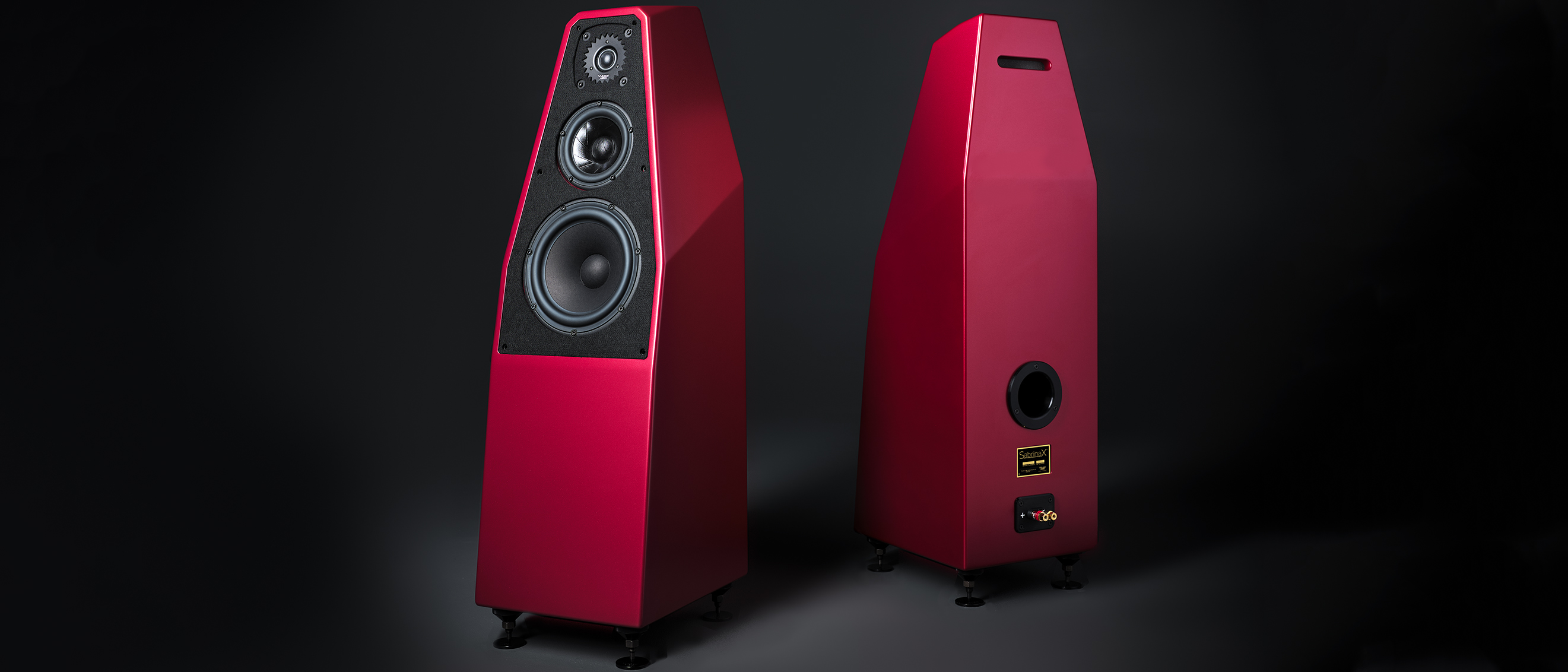What Hi-Fi? Verdict
This X-rated version of Wilson Audio’s famous Sabrina design is the best yet. It’s compact, available in any colour you want and sounds superb.
Pros
- +
Superb sound
- +
Finish options
- +
Adjustable crossover
Cons
- -
Speaker terminals
- -
Cost of options
- -
Low impedance
Why you can trust What Hi-Fi?
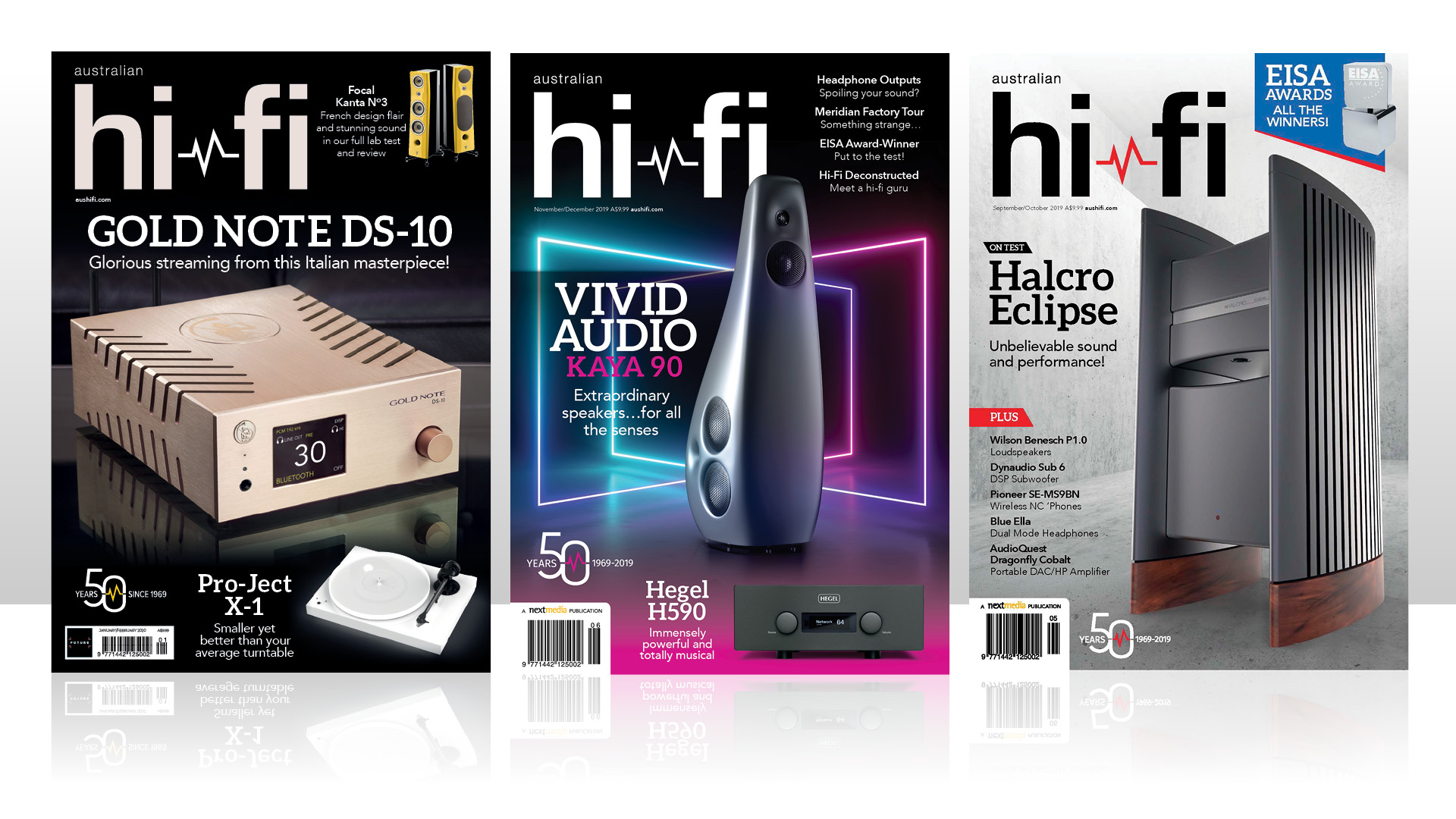
This review and test originally appeared in Australian Hi-Fi magazine, one of What Hi-Fi?’s sister titles from Down Under. Click here for more information about Australian Hi-Fi, including links to buy individual digital editions and details on how best to subscribe.
Wilson Audio, which operates out of Provo, Utah, first gained fame for building the first speaker system in the world that had a six figure price tag. And that tag was in US dollars, which were worth a lot more back then than they are now. But here’s the thing: everybody who heard them agreed that they were worth every penny of the asking price.
But of course you can’t expect to stay in the loudspeaker business for long selling only $100,000+ loudspeakers, so Wilson Audio, first under the watchful eye of its founder and chief designer, the late David Wilson, and then more recently under the equally watchful eye of his son Daryl, trickled down the technology used in its flagship model to create a series of much more affordable models, including the SabrinaX.
Equipment
First, the finish. That finish is a perfect painted finish that is the end result of a super-smooth panel material (X-Material), over which is laid a gel-coat followed by fourteen coats of high-gloss hard-wearing paint. The finish is more uniform than it was on the original Sabrina because whereas that model used Wilson’s X-Material only in its baffle and lower spike plate, the SabrinaX’s outer enclosure is constructed entirely from X-Material. Which is probably a perfect time for you to ask what X-Material might be.
Unfortunately, no-one at Wilson Audio is going to tell you that – it’s a trade secret. If you ask Daryl Wilson, what he’d likely tell you is that “it’s a near-silent material that enables music to emerge from the SabrinaX from a blacker background. It’s a material that vastly improves bass transient performance and clarity. Listeners will hear superior silence between the notes, which, among other factors, enhances SabrinaX’s rhythmic timing and pace.”
What we can tell you is that it’s an incredibly dense material – so dense that it’s impossible to pick up a standard-sized sheet of the stuff unless you’re an Olympic weight-lifter, and it’s so hard that Wilson Audio needs to use diamond-tipped tools to work it. Our pair was finished in Olympia Pearl, which is one of Wilson Audio’s premium finishes, for which there’s an additional cost over the usual base price of £21,998 / $18,500 / AU$29,995 per pair for the standard colours, which are Galaxy Grey, Quartz and Carbon.
You can pay a somewhat smaller premium to ‘Upgrade’ these standard colours to Ivory, Diamond Black or Crimson Satin. The prices of the SabrinaX in these colours is £22,998 / $19,500 / AU$31,995 (per pair).
In addition to ‘Upgrade’ colours, you also have the option of creating a unique pair of speakers by specifying your own colour, because Wilson is set up to do colour-matching, right down to sending back approval samples of how the colour you’ve selected will actually look on a piece of cabinet, so you can be 100 per cent certain of what you’re getting. However, we are advised us that ordering a ‘Custom’ colour involves a specific ‘application process’ about which your dealer can advise you. The usual premium for a ‘Custom’ colour is the same as for a pearlescent finish.
The concept behind the original Sabrina was to take what had been learned during the development of the company’s then top-of-the-line Alexandria XLF and bring it to a more affordable floorstander.
The SabrinaX maintains the design of its predecessor, with the two-step sloping baffle helping the speaker seem rather smaller than it otherwise might, though it is just over a metre high once on its spiked feet. However, in a rather Escher-like illusion, the cabinet does not appear bulky when viewed from any direction, thanks to its geometric non-parallel and non-contiguous external panelling. Indeed it rather reminded us of some of the sculptures created by Dame Barbara Hepworth.
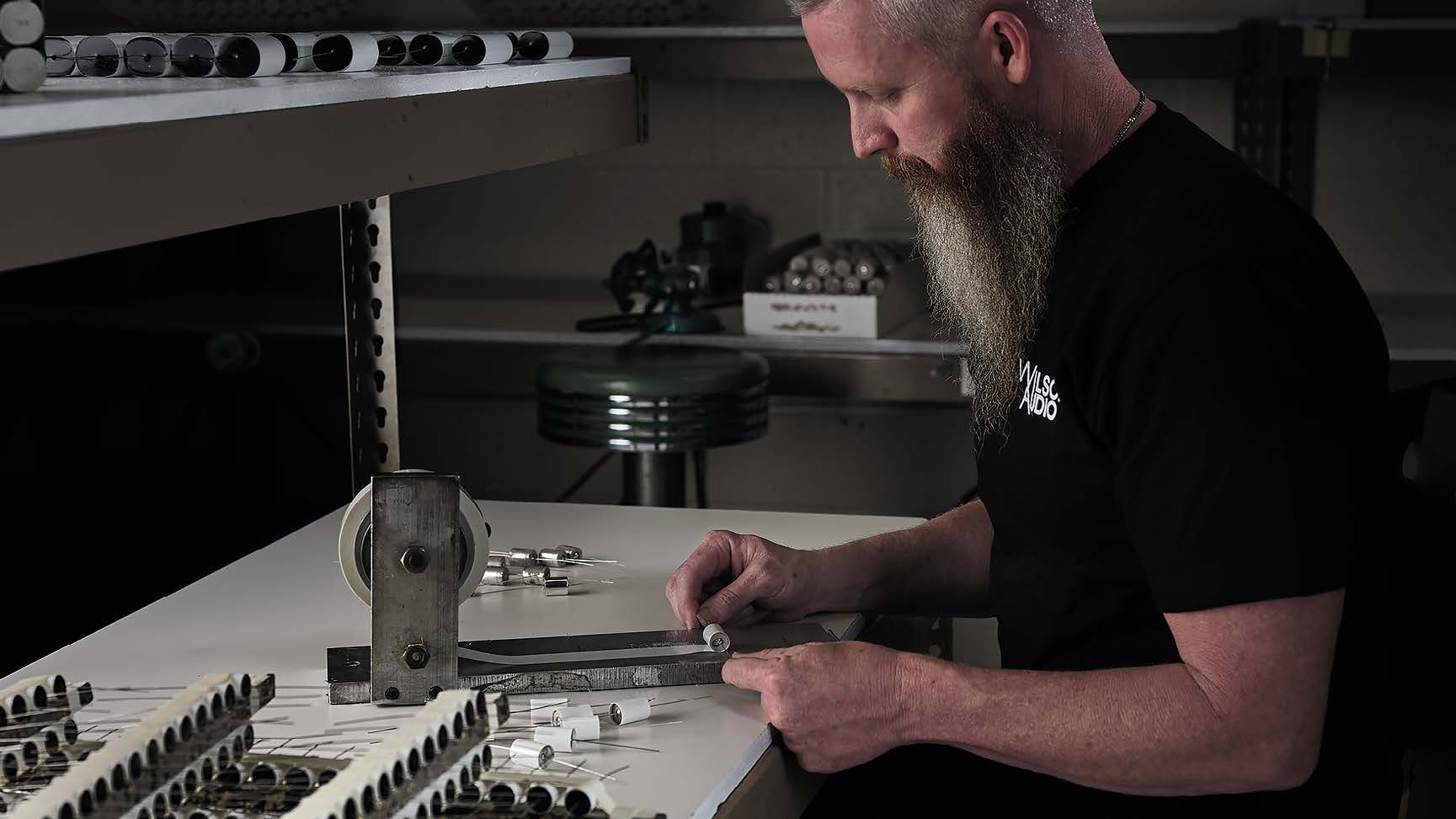
In the five years since the original Sabrina was released, Wilson has been exceptionally busy, initiating research and development projects into four key areas of the design. One of the most significant of these was that rather than buying its capacitors from a third party, it decided to make them itself – a not-insignificant undertaking.
Wilson vastly simplified this undertaking by simply acquiring the company that previously supplied it with capacitors. It not only acquired that company (Reliable Capacitors) but also moved it lock stock and barrel to Provo, Utah so it could, literally, build them ‘in-house’.
Wilson also took the opportunity to ‘re-brand’ what were formerly branded as ‘RelCaps’ or ‘as MultiCaps’ so they’re now known by the name ‘AudioCapX’. They have also tweaked the design of the unique multisection capacitors in such a way that according to veteran Wilson engineer Vern Credille, “their noise floor is significantly lower, allowing the listener to hear more detail and resolution.”
The tweeter in the SabrinaX comes from the WAMM Master Chronosonic – a Convergence Synergy MkV tweeter, with a 25mm doped fabric dome, described by Wilson as “the most musically honest tweeter we’ve experienced thus far.”
Like all the drivers, the tweeter is recessed into the front baffle and surrounded by a layer of felt material – and in the case of the tweeter the usual felt layer is complemented by an additional layer of felt cut into a star-like shape.
The midrange is delivered by a 146mm diameter doped paper pulp midrange driver, the rear output of which is gathered in its own isolated volume that, whereas in the original Sabrina was connected to the outside world by a circular port, is now vented via a slot that’s 120mm long and 20mm across. This change came about as a direct result of research Wilson was doing into the performance of the Chronosonic XVX.
Bass frequencies are accommodated by a 203mm paper-pulp woofer with a rubber suspension borrowed from the Sasha DAW. This driver, which seemed to be more compliant than we remember it being in the Sasha, also has its own dedicated internal chamber, but it ports through a new circular machined-aluminium port that is 77mm in diameter and around 200mm long of a specific design that is said to “reduce audible turbulence.”
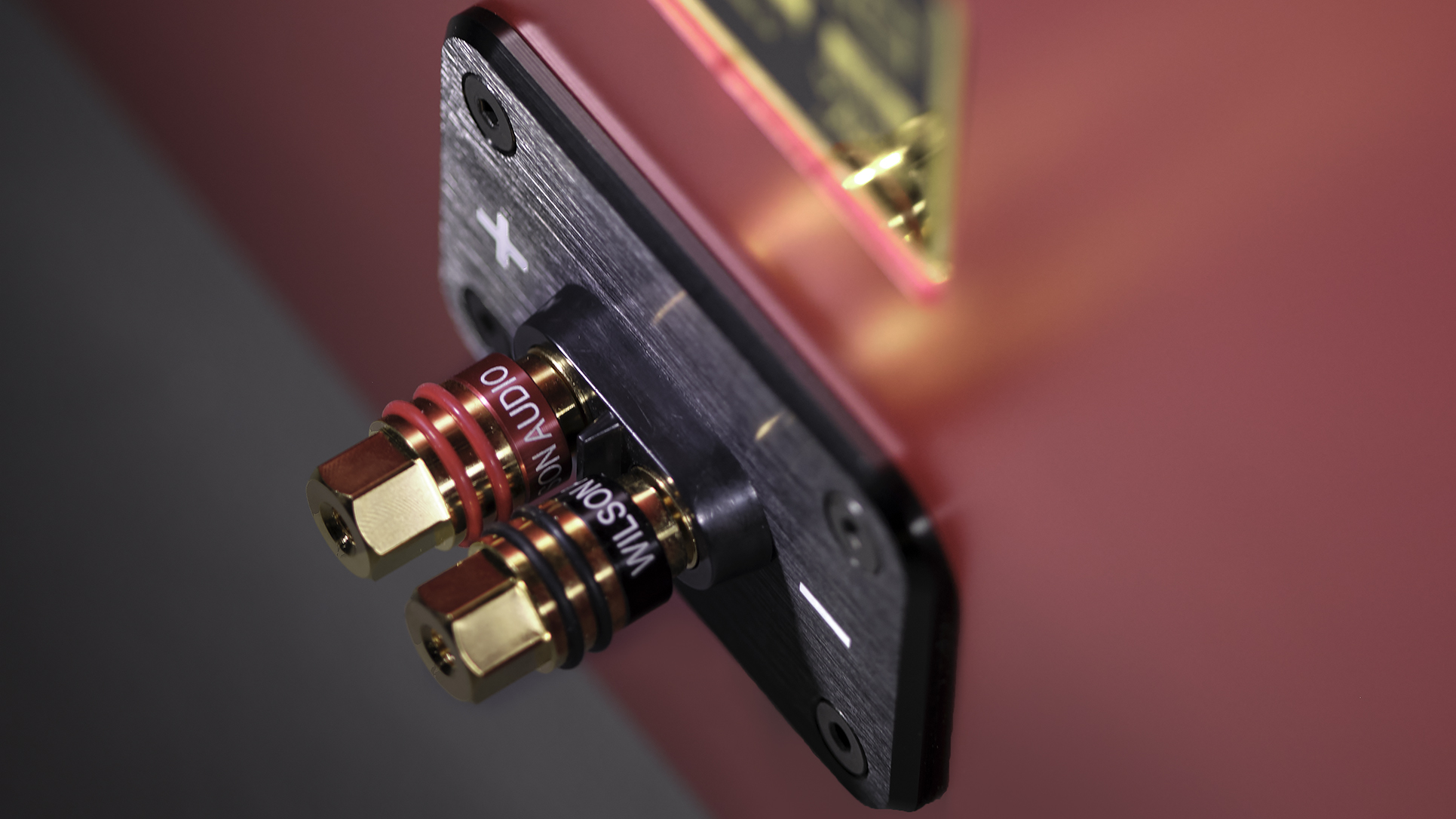
The speaker binding posts on the rear of the SabrinaX are not some ‘off-the-shelf’ design from some third-party vendor, but are of Wilson’s own design – a design that it says is specifically intended to deal equally well with any of your preferred cable terminations, be they spades, banana-plugs, pins or bare wire.
We weren’t convinced about bare wire or spades, because the terminals on our sample left around a 1.5mm gap at the bottom when fully tightened, so they wouldn’t lock down on standard spades unless we added a washer (gold-plated, of course). There is only a single set of these on each SabrinaX, so there can be no biwiring, biamping or bypassing of that all-important crossover.
Speaking of which, that all-important crossover is user-adjustable, which is a rarity on modern loudspeakers.
If you carefully lay the speaker on its side you’ll see a large ‘hatch’ on the bottom of the speaker, the removal of which will reveal a set of resistors, including two 4.2Ω resistors in parallel which control the voltage going to the midrange driver and two 7.9Ω resistors in parallel which control the voltage going to the tweeter.
These resistors can be replaced with other resistors of different values in order to adjust the volume level of the midrange and/or the volume level of the high frequencies. The other resistor is reportedly there for the bass driver and should not be changed except for another resistor of the same value.
Although these resistors obviously adjust the balance of the mids and highs against that of the bass, Wilson Audio claims that they “act as fuses against excess power delivery”. If this is indeed the case, we think we would have preferred to see actual fuses, as these would act faster than resistors in an overdrive event.
If you do need resistors, these have to be purchased from Wilson in order to retain your warranty – you can’t just fit your own. A complete resistor set for both speakers will cost around $400 / £300 / AU$600.
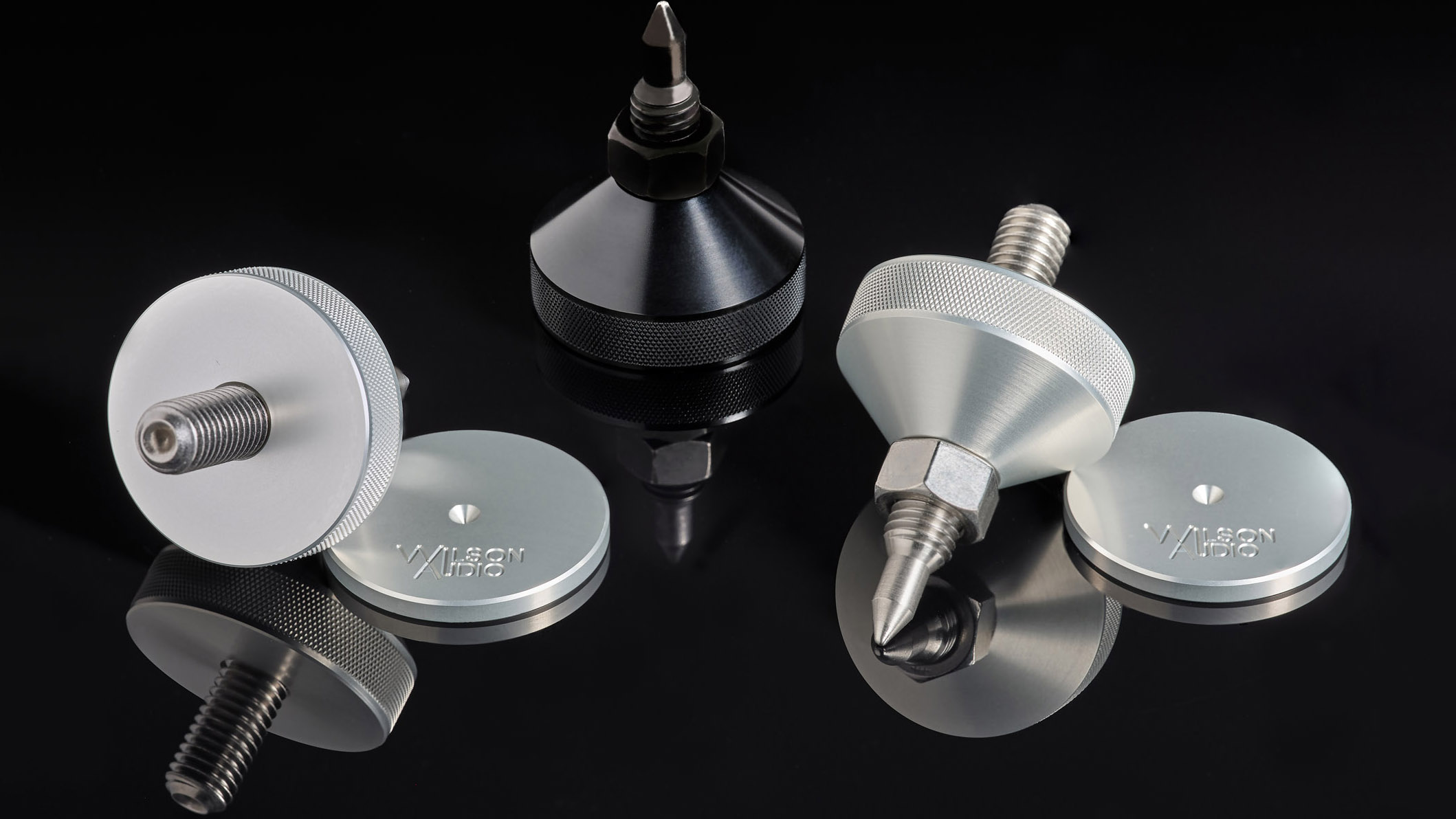
Compared with the original Sabrina, there’s also a new spike/diode system used to isolate the cabinet from the floor – and vice versa – brought across from the WAMM Master Chronosonic and XVX designs. These require individual assembly of the four elements: diodes, spikes, threaded posts and locking nuts, for which careful installation instructions are supplied. You should take care not to over-tighten them, as they are used post-attachment for levelling.
Installation of these spikes requires a rather careful laying down of each SabrinaX on its side, after which assembly can be initiated. The tools supplied to assist you with this process are impressively comprehensive: it’s rather like opening a tool box for a motor vehicle, not least because the tools are motor-vehicle sized, comprising a massive ¾-inch open/ring Crestalloy chrome steel spanner 240mm long, a full-sized Klein Tools 14mm hex driver, a Qualtool USA 7mm hex driver, and a 140mm long 7mm Allen Key, all of which are required to assemble the eight massive stainless steel 12mm threaded bolts, eight equally massive 12mm threaded spikes with nuts, eight feet and eight spike plates. Phew!
These are certainly very impressive spiked feet, but according to Wilson Audio, they’re not the last word in isolation. You can upgrade these feet to what are called ‘Wilson Audio Acoustic Diodes’. These feet are made using what Wilson calls ‘our proprietary V-Material’ which it describes as a ‘constrained layer damping composite unsurpassed in vibration absorption and resonance control.’
How it works, according to Daryl Wilson, is that “energy from the enclosure migrates into the V-Material where it is faced with the effective damping properties of this efficient material. The mass of the loudspeaker concentrated onto the very small ends of the spike tips results in significant levels of PSI that prevent detrimental vibrations from travelling upward into the footer. Vibrations that do travel up the spike are absorbed by the mass of the Acoustic Diode and have to travel through the V-Material to have a chance to influence the enclosure.”
Wilson adds that “Keeping the spike and threaded post separate prevent a direct path for vibrations to travel, or interplay, and are therefore dissipated and absorbed in either the V-Material or the footer housing. This distinctive design, combined with advanced vibration-mitigating materials, provides the best of both worlds; a solid base from which the drivers can launch as well as preventing the transmission of energy from the floor to the loudspeakers.”
A complete full-pair set of Wilson Audio Acoustic Diodes sells for £2,413 / $3,200 / AU$4,995 (RRP).
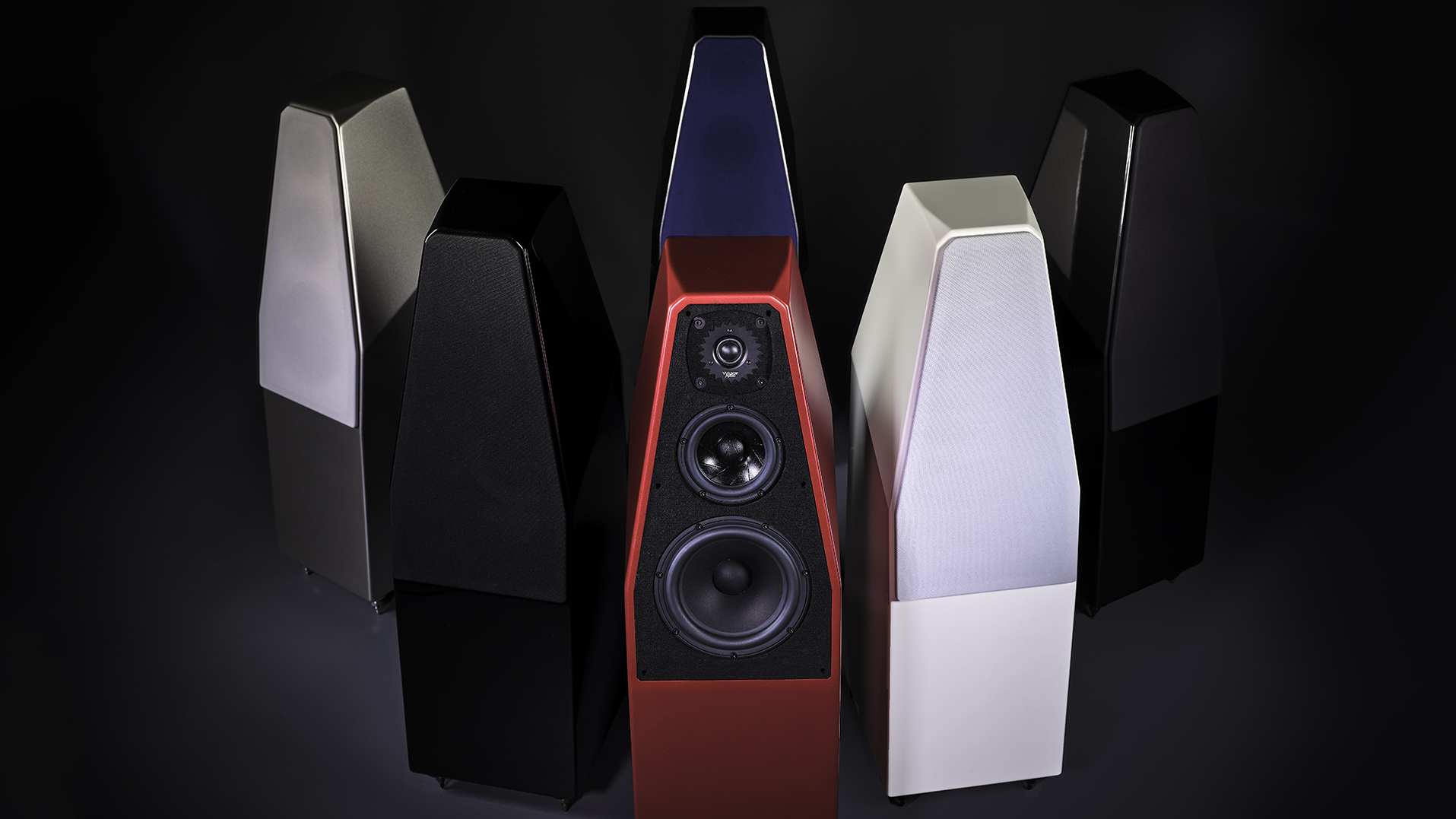
Wilson has always been super-clear about the need to exactly position its speakers in a room for best performance, with this positioning and alignment becoming an increasingly complex procedure with its models that have adjustable midrange and high-frequency sections. The SabrinaX being a single cabinet is, thankfully, rather easier to align, but Wilson still suggests you use its tried-and-tested ‘WASP’ procedure.
WASP (an acronym for Wilson Audio Setup Procedure) is basically a walk-round-the-room process where you use tape to mark out the area which is least affected by the boundary effects of your room – a ‘zone of neutrality’ as Wilson calls it – in which the speakers should be installed.
Along with defined rules for the listening position, this aims to ensure you hear the speakers themselves, not the room. While many speaker designers will assume room effects and design their speakers accordingly, Wilson wants you to hear what they hear, taking out the variability of location to the greatest extent possible.
The loudspeaker grilles (which, on our review speakers, were a colour Wilson Audio calls ‘Parchment’) attach via stainless steel pegs on the grilles that slide into rubber-booted holes in the cabinets. This means the fittings will be visible if you don’t use the grilles. (Perhaps it’s not possible for Wilson to use magnetic grilles with its X-material.)
Listening
We normally wouldn’t expect too much bass from a single 203mm bass driver, either in terms of clean, undistorted volume level or in terms of low-frequency extension, so the bass we heard from the SabrinaXs was certainly a surprise!
One reason, we guess, is that they benefit from being in a very large, very inert cabinet, and another being that they’re very good drivers. That said, there might not be enough bass if you have a very large, highly damped listening room – that might be the correct domain for a larger model from Wilson Audio’s extensive range.
As it happened, our typically-sized Australian listening room proved to be ‘just right’ for the SabrinaXs, hence the surprise we expressed earlier. But we do need to add one proviso, which is that the bass you hear (and maybe also the lower midrange you hear) will depend on you using a high-quality amplifier that will happily drive impedances as low as 2Ω, not least because Wilson’s own specifications put the impedance at just 2.6Ω at 135Hz.
These days, there are many excellent amplifiers that are able to drive 2Ω loads, so you will have lots of choice. Properly positioned in the right room (and perhaps a tad closer to the rear wall than Wilson recommends) and with a suitable amplifier, you will hear no shortage of bass, either in extension or volume level.
We cranked up the dial on Flux Pavilion’s I Can’t Stop and had the room energised by Joshua Steele’s synthesised bass lines and ping-ponged vocals and also on Tommy’s Theme (Noisia), but it was Linkin Park’s Papercut, from ‘Hybrid Theory’ that had the SabrinaXs really cranking out the decibels, not only in the bass, but also right across the audio spectrum.
Listen to Linkin Park on lesser speakers and it’s just noise. Listen on revealing speakers such as the SabrinaXs and they’ll separate all the threads so you can hear and appreciate the craft that’s gone into the music. ‘Revealing’ would be a good word for it.
The track that follows, One Step Closer, is not as complex, but the bass is still fast, immediate and deep and transmitted accurately by the SabrinaXs. It was also extended and articulate, as we heard listening to Neil Young’s Walk with Me where the entire track, but in particular the series of low frequency surges in the final minute, were better presented by the SabrinaXs than we’ve heard from anything short of giant speakers.
If Flux Pavilion, Linkin Park and Neil Young aren’t your usual listen, by all means audition them with music you’d normally listen to, using one with the deepest bass you can find. If you’re into classical, nearly all orchestral works will have tympani and double-bass, either or both of which should do the trick, so we’ll leave the choice of what classic you audition up to you.
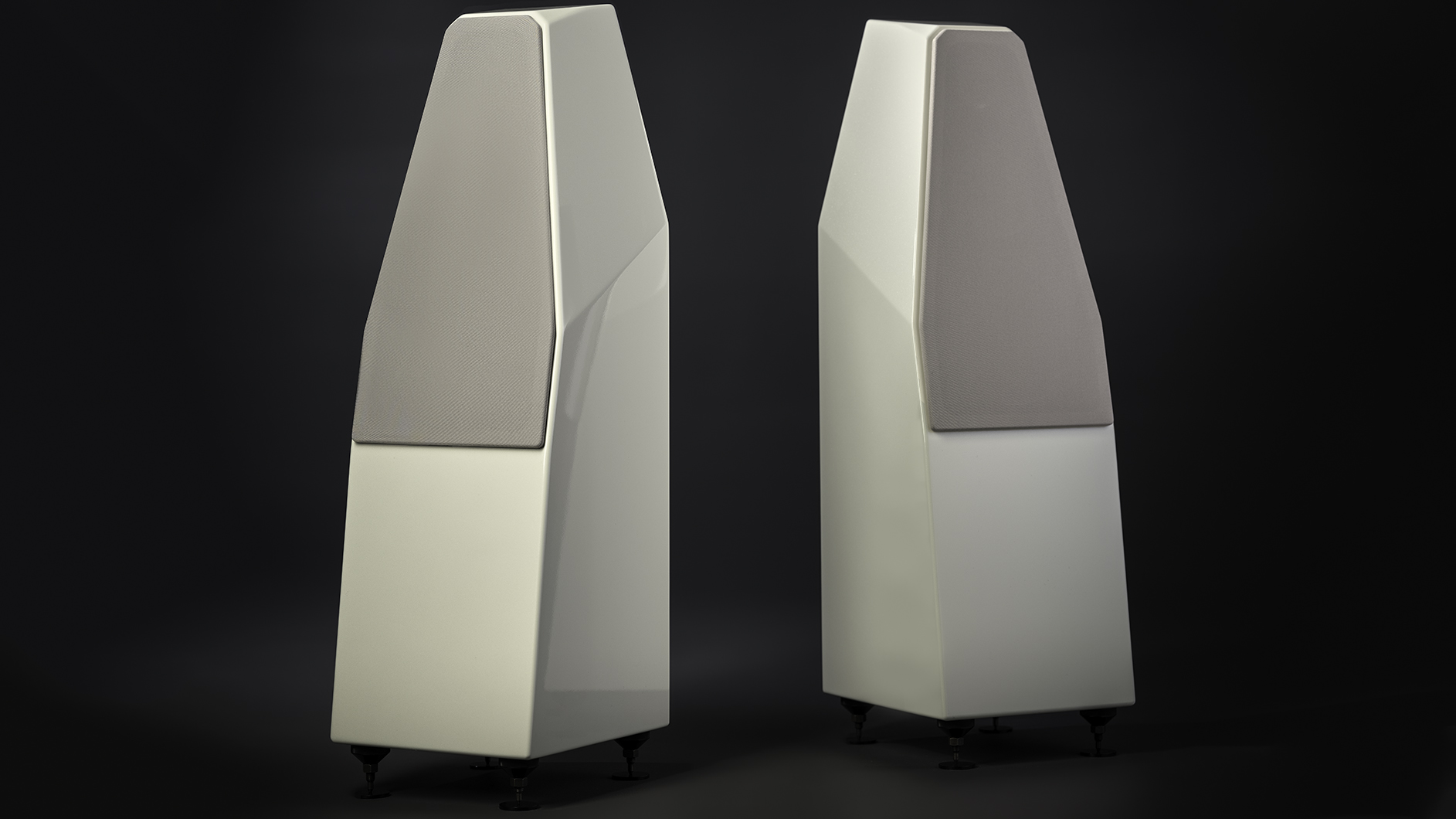
For a taste of jazz, we fired up Herbie Hancock’s Watermelon Man, from his 1973 album ‘Headhunters’ (OK, so it’s technically jazz/funk, but if you’re a jazz purist, don’t let that put you off listening to it). Also don’t let the weird introduction (it sounds like you’re in a jungle in Africa) put you off listening further into the track because once the 16-bar blues progression starts up (though quite unlike a blues), you’re going to hear an absolutely to-die-for bass line, for our money one of the best Paul Jackson ever created.
There’s plenty of great depthy drumming from Harvey Mason, too, but after you’ve appreciated the bass delivery from the SabrinaXs, play the track again and admire Bennie Maupin’s saxophony, because it’s amazingly good, and his superb tone is authentically delivered by the SabrinaXs.
On the following track, listen to just how fast the Wilson Audio SabrinaXs are, not only with Hancock’s stabbing keyboard lines, but with the incredibly snappy drumming, the sound of which is complicated further by a variety of percussion played by conga specialist Bill Summers (and yes, he manages to fit congas in as well, and the SabrinaXs are equally fantastic with those syncopated taps and rolls).
One of our new favourites for testing midrange, but also just for the pleasure of listening to it over and over again, is Lana Del Ray’s fabulous new album ‘Blue Banisters’ and heard through the SabrinaXs we were in seventh heaven because her perfect voice, with just the slightest reverb, punched out into the room while the spacey background sounds filled the entire environment.
The title track (which is about how her previously blue banisters came to be painted grey, proving that you can write a great song about anything) is alone worth the price of admission. Arcadia, which follows, is equally beautiful, but we listened to the way the SabrinaXs delivered the sound of the cello, violin and viola so accurately we were never in doubt as to which was playing. Then there’s the stand-out way the SabrinaXs delivered the sound of the piano, the tuba and the trumpet.
But the knock-out track on this album just has to be Black Bathing Suit. This is not the ‘hooks n’ structure’ Lana of old, but a new artist with a newly unfathomable approach to her art. The atmospherics are intense, whether it’s the ghostly harmonies, the off-time cymbal taps and rides (perfectly reproduced by the SabrinaXs’ tweeters we need to point out) or the bass (both real and synthesised, with the SabrinaXs highlighting the differences between them). And that ending!
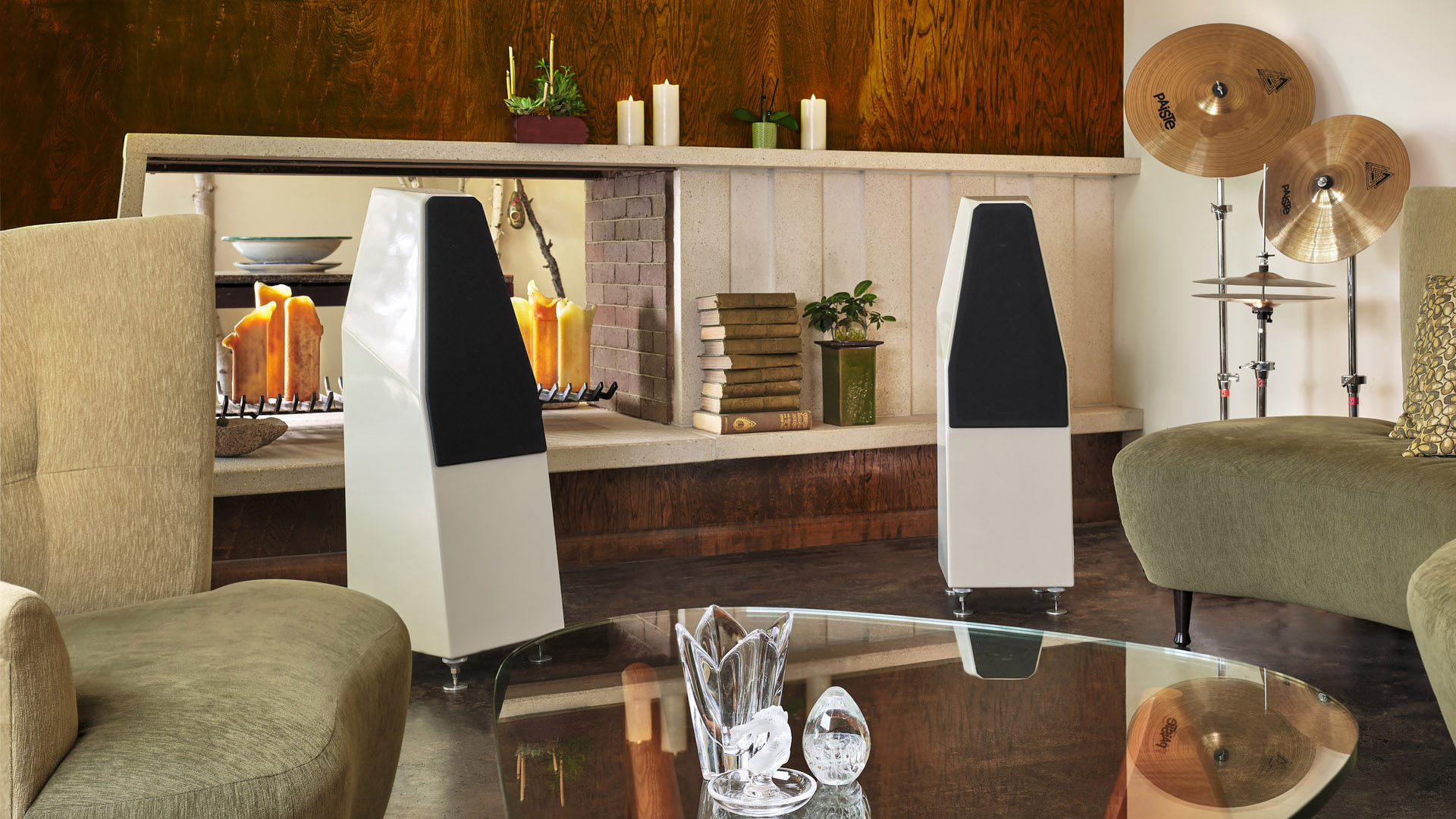
We also like Cherry Blossom, which she co-wrote with Rick Nowels, who plays piano on it. Again the SabrinaXs make it seem like the pair are in your room. Listen especially to the control the Wilsons have over the fades, both vocal and instrumental, so the decays are smooth as silk, with no loss of tonality as the volume drops away into the background.
On Sweet Carolina, which follows, the sound of the Wilson SabrinaXs is sufficiently revealing to show that the pianist has changed (this time it’s Robert Grant Jr. at the ivories), but the lyric and Del Ray’s upper vocal registers are what you should be listening to on this one.
We also love Laurie Anderson’s ‘Big Science’ for testing out midrange, but it’s also excellent for testing out high-frequency sound, not only with the keening sound of her violin, but also with the spacious hand-claps, wood-block hits and marimba strikes, which you should all hear not only with precise speed and control, but also in their own distinct acoustic spaces, most notably on Born, Never Asked. And when we say ‘keening’, it’s not a traditional violin, but an instrument of her own design, featuring magnetic tape on the bow and a magnetic tape head in the bridge.
Weirdly enough, the most popular track on ‘Big Science’ is reportedly not Born, Never Asked, but the rather strange O Superman, which sounds like it could have been written by David Bowie, but in fact the text was written by French opera composer Jules Massenet (1842–1912).
We here paraphrase Wikipedia’s description of this track: “Overlaid on a sparse background of two alternating chords formed by the repeated spoken syllable ‘Ha’ created by looping with an Eventide Harmonizer, the text of O Superman is spoken through a vocoder. A saxophone is heard as the song fades out, and a sample of tweeting birds is subtly overlaid at various points within the track. The two chords of the song are A-Flat major and C minor, with the repeating ‘Ha’ syllable (a C note) acting as a drone.” (Because of this, the track is ideal for A–B testing, and also for calibrating loudspeaker toe-in.)
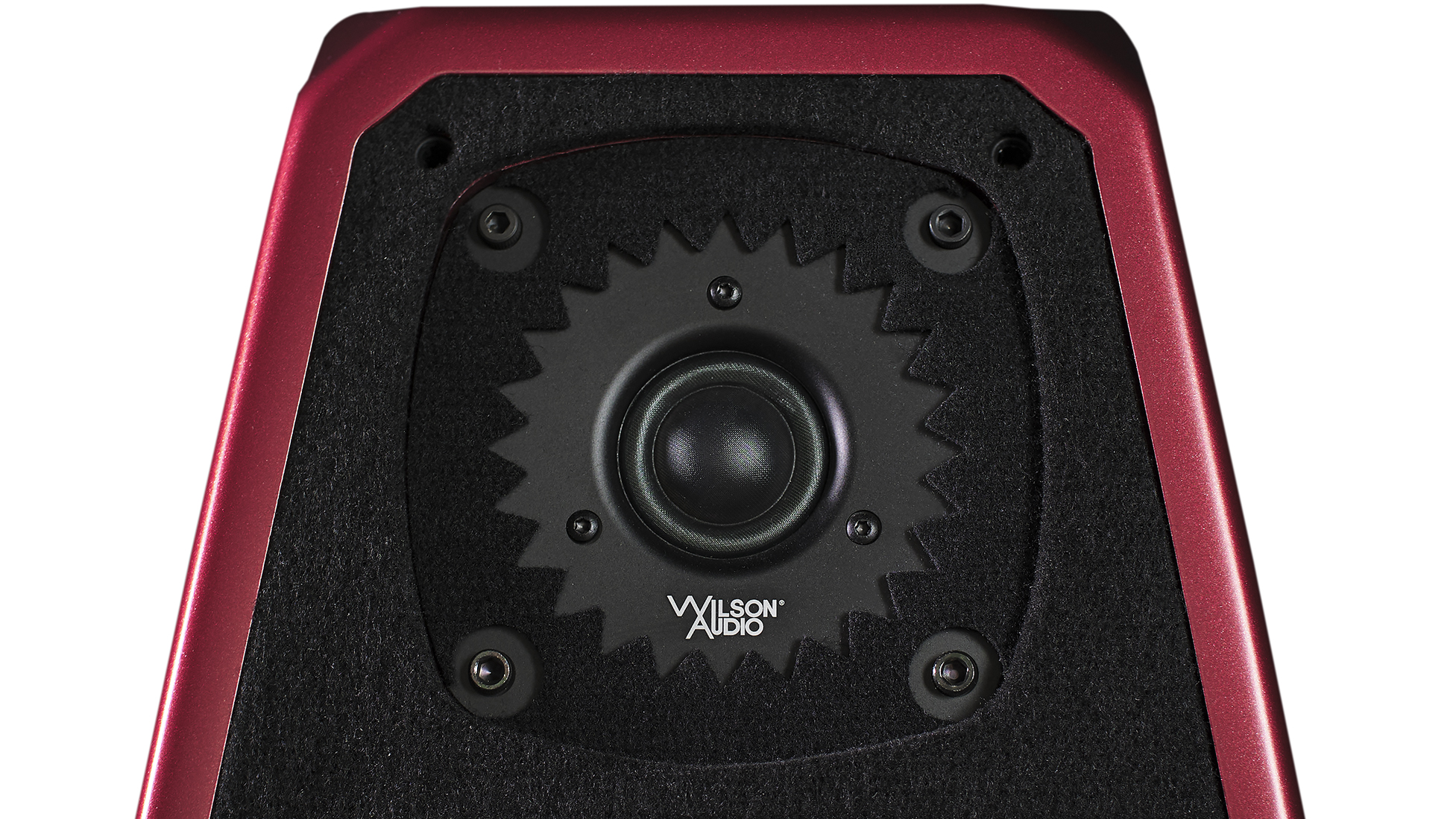
Further high frequency listening (Diana Krall for the first verse of her Alone Again (Naturally) duet alongside Michael Bublé was forward and full as she smoothly sang, without a gram of overfill or stodge, simply dripping with delectability dead centre, a mesmerising lead vocal.
The SabrinaX’s tweeter and midrange don’t, however, deign to soften material that is brightly recorded. Dion’s I Read It (in the Rolling Stone) has a vocal that many speakers will send into a shriek, also failing to give the band the substance to compensate. The Wilson SabrinaXs walked a perfect line here – the vocal was edgy but never painful, while the band was given shape with perfect size and fullness, possibly the most accurate delivery of this torture test track we’ve yet heard.
We checked out Wilson Audio’s quality control procedures by listening to how the SabrinaXs handled Leonard Cohen’s vocals on the first verse of Going Home, and can report that they sat huge and intact in a silent central space, every nuance clear and correct, and unaffected when the other elements joined the mix: a perfect picture of the bongos tapping on the right, the slow drum shuffling behind it, so an image not only perfectly positioned between the left and right loudspeakers, but one that had stage height and depth as well.
This is only possible if the left and right midrange drivers and the left and right tweeters have been hand-matched for sensitivity, so this is very obviously what Wilson does before they’re even inserted in their cabinets.
Verdict
If you would really have preferred to own a pair of Wilson Audio’s Chronosonic XVXs (or Alexx Vs, or Sasha DAWs, or Yvettes) but your other half won’t have them in the house (you have to see them in the flesh to appreciate why that might be) – or maybe it’s just the price tags of those models getting in the way – the good news is that the very clever Mr Wilson has managed to distil the unique ‘Wilson Audio Sound’ into the much smaller, considerably less costly – and, to our eyes, far more beautiful – SabrinaX.
Australian Hi-Fi is one of What Hi-Fi?’s sister titles from Down Under and Australia’s longest-running and most successful hi-fi magazines, having been in continuous publication since 1969. Now edited by What Hi-Fi?'s Becky Roberts, every issue is packed with authoritative reviews of hi-fi equipment ranging from portables to state-of-the-art audiophile systems (and everything in between), information on new product launches, and ‘how-to’ articles to help you get the best quality sound for your home. Click here for more information about Australian Hi-Fi, including links to buy individual digital editions and details on how best to subscribe.
